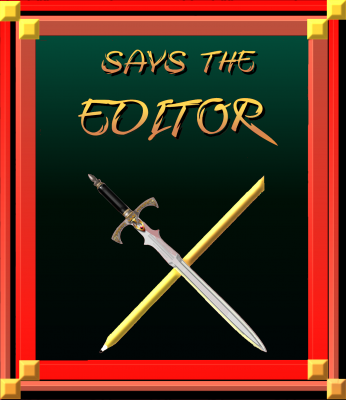August 19, 2021

I’ve been seeing this crop up lately, so let’s talk about how your narrative sequences things: cause and effect, or effect and cause?
Need an example? Here’s one: He turned when he felt…
Now, that seems like it’d work, right? It heightens the drama… He turned! Why did he turn? Well, keep reading and we’ll tell you it’s because he felt (whatever it was that he felt).
But do you see what’s happening here? You have effect and cause, not cause and effect.
Or, in other terms: The character reacts to something before the reader knows what s/he/they are reacting TO. It’s not only a reaction. It can be any motion out there. She walked up the front steps after closing the car door.
As an author working on your first draft, it’s one thing to do this. The first draft, after all, is for figuring out where the story’s going, what’s happening on the page, how the characters are moving (and why)… it’s for learning. This is why I always encourage authors to not be afraid to puke on the page. Get it out, get it down, go back and craft it later.
It’s that later that often becomes a problem. Because it’s one more thing you have to look for, be alert for, know if you have a tendency to do this or not. (Most of us do.)
Go on. Take a look at your work-in-progress. Do you have cause and effect, or do you have effect and cause? And can you think of a time when effect and cause is the better option? I actually can! Don’t rest on your laurels, though. Check your WIP. I bet you’ve got some.
Remember, if you’d like to work with Editor Susan over here, I’m now booked up until November. I’m only taking rush jobs from existing clients; I’m holding up too many careers as it is! And don’t set a bloody presale date until AFTER you’ve gotten your manuscript through the editing stage, just in case your editor is backed up and/or you wind up with unanticipated rewrites.
April 5, 2017
Okay, I’m not sure what desecrate is doing there, except it sounded good.
Well… I am sure. Because when it comes to description, I’ve seen authors desecrate their manuscripts with too much of the wrong kind.
Wrong kind?
Yep.
Like every other tool that authors use to craft the best book possible, description needs to be used in the right way. Taking time to describe every single room the characters enter in a fantasy quest is important in D&D. It may not help us understand anything new about the setting, plot, or character when we’ve had to stop all the action to take a long look around the fifteenth room. Or even the fifth.
Yes, you read that right: Ideally, description is used to help further the reader’s understanding of setting, plot, or character. It can be used to increase tension.
What it should never do is bring the entire works to a screaming halt. Description isn’t a time for an author to stop and let the reader catch their breath before we dive back into what’s going on. It’s a tool, and it needs to help further your story.
Now, can you have too little description?
Fans of Raymond Carver are going to scream, but yes. I believe so.
And for the same reason that makes too much description a bad thing: we need some to help us understand the character. Their basic personality, their perceptions, their sensibilities. What a character takes in, observes, and spits back out for the reader tells us a lot about who they are. If they don’t give us even a little bit, they begin to exist in a vaccuum. Or, as one of my clients says, “I’ve got a problem with talking heads.”
I never did like that band much.
So description, like everything else in fiction, is a tightrope. It takes skill and instinct to know how to wield it most effectively. The best way to gain that skill and hone that instinct is to read, read, read, and write, write, write. Pay attention as you read. What does this descriptive passage achieve? Does it stop the action in order for you to drink in the surroundings?
And then sit and write. Do you need long descriptive passages, or can you use a few words to create a broad brush stroke that conveys the essence of what you are trying to say, so that you can return your focus to the plot, the pacing, the tension, the fact that your male lead is trying to take his shirt off but you’re embarrassed, so you’re focusing on the way the silk flows instead of the washboard abs and warm, silky skin underneath?
Ha. Gotcha.
But think about that. It’s the best example of description you’re going to get in this post. So take a few minutes. Think about the picture I just painted. Count the words.
Do you REALLY need to stop the action and make sure you hit all five senses in order for a description to be good?
I didn’t think so.